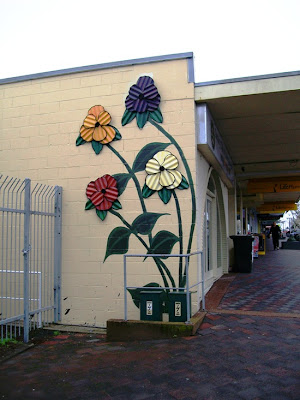Further to my post earlier:
here.
I rang Auckland City Council this morning, and a staff member from their Streetscapes division was good enough to give me a prompt call back.
There are no immediate plans to build a plinth/strand for the gun, because the budget for the Lumsden Green upgrade (from where the gun was moved) didn't allow for it. There are no funds at present, but in the longer term there are hopes there might be an opportunity this coming year (2010/2011) if funds become available. The person I spoke to said he wasn't particularly happy with the way the gun is at present, which was heartening to hear, but -- without support, both from the public, nearby historical societies and local body politicians, I can't see the situation changing any time soon.
A summary history:
I believe this to be a 7" RML gun, based on contemporary illustrations of this type of arnament. The Government imported 7" and 64-prs guns during the time of the "Russian Scare", starting from 1879. The guns were either placed in storage, or deployed in batteries along North Head, Okahu Point or Judges Bay at Parnell.
The RML guns were obsolete by 1910. Newmarket Borough Council obtained agreement in 1911 for the Permanent Force of Devonport to "render the necessary assistance in removing the Gun promised to the Council", and it was moved by J J Craig Ltd from Devonport and delivered to Newmarket by March that year. Photographs of its installation on the reserve which stretched (in those days) from Olympic Reserve right through to Lumsden Green were published in the Weekly News, 8 June 1911. It appears to have been originally sited at what is now the Lumsden Green end.
It was buried in 1942 due to fears of aerial bombing by the Japanese during World War II, and located and unearthed in 1968. It was placed on a traffic island out on Broadway. Its original gun carriage had been sent to the tip during the war. It proved to be a traffic hazard on the traffic island, so was relocated yet again, this time back to Lumsden Green.
Sources:
Peter Cooke, Defending New Zealand – Ramparts on the Sea 1840-1950s, 2000,
David Veart, North Head: The Development of a Fort, Science and Research Internal Report No. 79, 1990
Auckland Weekly News, 8 June 1911
Dinah Holman, Newmarket Lost and Found, 2001
Some more info on general coastal fortifications and the old guns here.



















































.jpg)



